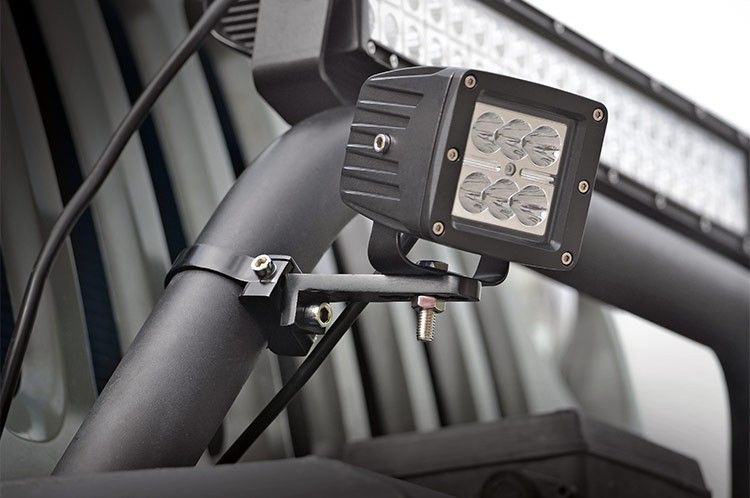Emergency Vehicle Light Mounting and Color Options

Emergency lights on the vehicles of first responders must be easily seen from near and far. The rules of the road tell all other motorists to move out of the way for flashing lights; without this authority to adjust the flow of traffic, emergency professionals lose precious time to rescue victims from danger. It’s important to understand what kind of emergency lights are available to meet safety standards and where to install them.
Know the state laws where you live and work
Emergency team managers, drivers, and outfitters must review their state’s emergency vehicle light mandates. The laws are set by each individual state and are upheld through law enforcement.
Types of emergency vehicle lights
Emergency lights must be mounted in such a way that the lights are seen from all perspectives. Virtually every type of emergency light is available with LED, strobe, or halogen bulbs and choosing among them may be determined by budget, preference, and, most importantly, visibility requirements.
The basic variations of emergency vehicle bars include the traffic advisor, interior dash light, visor light, surface mount, and, most widely recognized, the light bar. Light bars come in various sizes and are available from full-size models, mini models, and stealth, low-profile units. The popularity of light bars among several emergency departments and volunteers may be attributed to the 360 degree output of illumination. Aside from the light bar, combinations of front and rear-facing lights may also provide the necessary all-around visibility.
Emergency light installation options
To avoid paying the costs of a full-sized light bar, choose a legally accepted arrangement of front-facing or rear-facing lights.
Front-facing emergency lighting options
- Interior Light Bars
- Visor and Dash Lights
- Surface Mount Lights
- Grille Lights
- Hideaways
- Strobe Kits
Rear-facing emergency lighting options
It’s easy to think front-facing lights should cover all angles of sight. However, first responders are actually prone to rear-end collisions. Increased visibility of the back of your vehicle decreases the likelihood of accidents. The options include:
- Traffic Advisors
- Surface Mount Lights
- Hideaways
- Bumper Lights
- Strobe Kits
Install emergency lighting in the right place
When selecting your combination of lights, verify the lights are designed for the desired location (interior or exterior). Not all lights are appropriate for placement on the outside of vehicles. Exterior lighting should be visibly weatherproofed. These sealed lights keep out moisture and other contaminants which may lead to light malfunction placing all drivers at risk. A light which is not obviously weatherproofed may only be installed inside the vehicle.
Permissible color options for emergency lights
Commonly, first responders in the U.S. use red, white, blue, green, and yellow lights. Every state provides legal statutes for what colors are permissible for each emergency department. Verify if your state also limits the locations of where your lights may be mounted. For the generalized guideline, read on:
- Red typically signals an emergency situation. Police, firefighters, and medical rescue teams make use of red lights.
- Blue is generally reserved for law enforcement. Some states permit volunteer firefighters and medical rescue members to use blue lights in private vehicles if they are deploying to the firehouse or other facility to respond to an emergency.
- Yellow or amber lights signal other drivers to use caution. These colors are generally used for road maintenance vehicles, tow trucks, school buses, and security patrols to warn motorists of slow driving or scenarios in which traffic will be blocked completely.
- Green indicates a mobile command car such as the fire chief. In the U.S., green is used by Homeland Security and other private Government security contractors.
- White flashing lights are sometimes found on school buses or fueling tanker trucks for fueling.
Providing excellent service with the proper emergency lights and mounts
Make sure you are able to communicate with other cars on the road to enhance your capabilities as a first responder. Know the laws of your state to legally provide 360 degree visibility to your vehicle. If a light bar is out of your price range, use a combination of front-facing and rear-facing lights to safely navigate oncoming traffic and alert motorists behind you.



 Facebook
Facebook
 Twitter
Twitter
 Instagram
Instagram
 Youtube
Youtube





